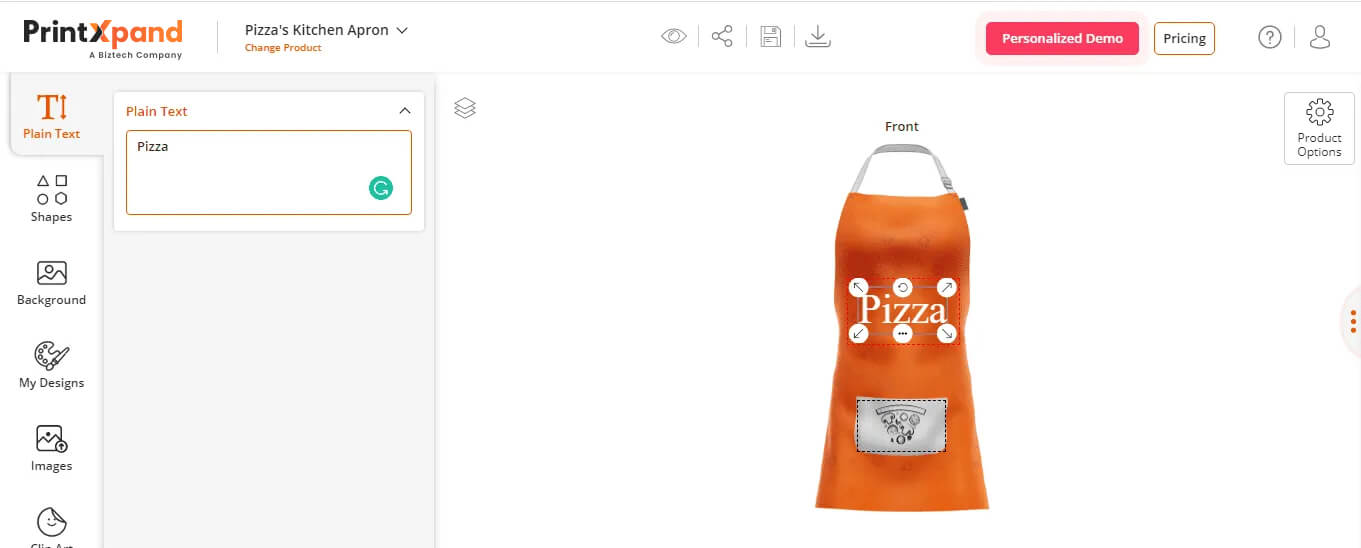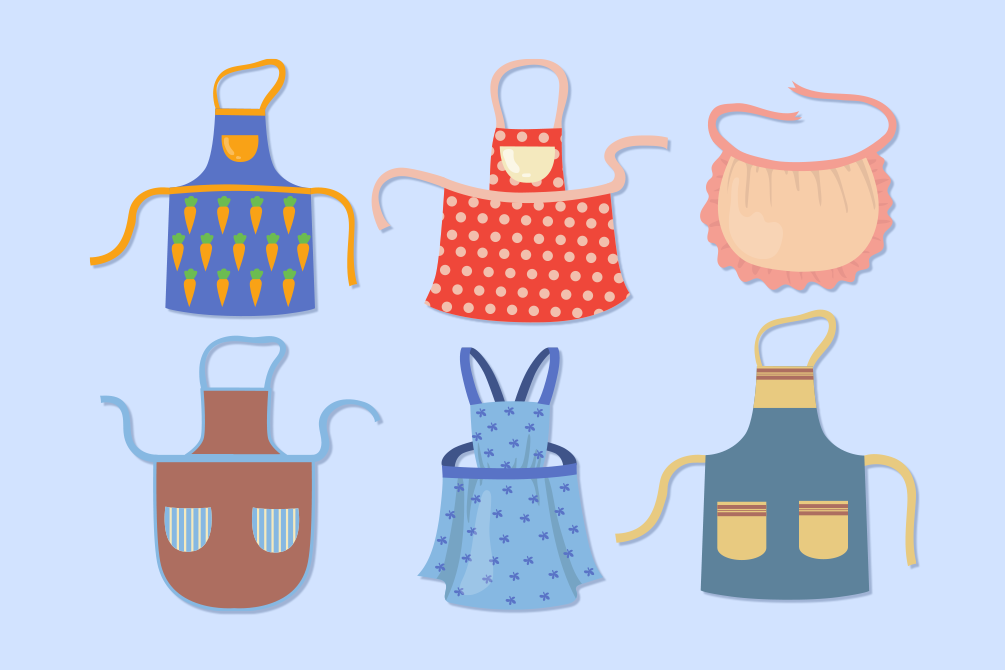Do you think dull kitchen wear deserves much more than stuffing back into the drawer?
Are you innovative and self-motivated?
Then selling aprons is a unique business idea to make money.
Ellen Bennett turned this kitchen accessory into a multimillion-dollar empire with its “Proper Bad Ass Aprons”. You could be next.
With the help of this checklist, you will be able to start selling aprons. The points are not in a particular order but every tip is important to help you start.
Continue Reading!
1. Decide How to Sell
There are numerous ways to sell aprons online, so you need to find the option that works best for you.
Option A – Online Marketplace
Most sellers turn to online marketplaces like Amazon, Etsy, eBay to enjoy the benefit of huge traffic. It works best if you do not want to build your own web-store or app.
An online marketplace gives you the following benefits
Increased Online Visibility
If you want to buy something? Which place will you go first? Do a google search or go directly on amazon? In most cases, the second option.
A lot of shoppers use online marketplaces as their main search engine. Do you know 56% of all product searches now begin and end on Amazon? This means that these platforms have a larger user base. So, you have the advantage to put your product in front of millions of users.
Quick Launch
Building an eCommerce store takes time. If you are new to online selling and want to quickly begin; an online marketplace is good for you. It makes selling easy – you become a verified seller, upload pictures, and start selling!
Established Marketing/Shipping Programs
Each of these platforms has marketing programs to help you reach your potential customers. For instance, Amazon Advertising, eBay Promotions Manager, and Google Shopping Actions. Moreover, with programs like Fulfillment by Amazon (FBA) and eBay Global Shipping you need not worry about packaging and shipping.
Here’s what you need to take care of before selling on an online marketplace
> Product Content – what compels shoppers to buy is the product content including title, description, categories, etc. Invest time in finding the right keyword and writing good descriptions that make them stay on the page longer.
> Pricing – on marketplaces like Amazon, shoppers have other options to buy within the same price. You might have decided the price of the product in the beginning, but to remain competitive, you need to automate your product price based on your competitors’ pricing.
Option B – Create an eCommerce Store
You want a complete control on products, prices, marketing, and initially would like to expand. Then consider building an online store. Getting started is easier than you might think. The process begins with deciding which type of e-commerce solution is ideal for your store.
> SaaS Platforms: Software as a Service refers to software which is made available for end users through the internet. The software is in the cloud and accessed through your web browser. SaaS platforms are the easiest way to build a powerful eCommerce website.
> Licensed: Licensed software is a software that you purchase. Unlike hosted solutions, you need to find your own hosting and security protections. The major disadvantage is cost. Many licensed eCommerce platforms come with price tags in the thousands of dollars.
> Open source: These solutions are free downloads that require you to build your online store from scratch. This gives you the liberty to customize your store but that requires programming–which means you need to hire someone.
Which one is best for me? As a small business owner, you have several things to focus on. You do want to spend days to build the infrastructure. In such a case, you are best off with SaaS eCommerce platforms such as Shopify, BigCommerce, and Volusion. The providers take care of all technical aspects while you can focus on your business.
Ensure your online store has the following features to attract customers, and grow your business:
> A smooth shopping experience
> Fast-loading pages and easy navigation
> Easy checkout
> Detailed product descriptions
> High-quality product photos
> Product reviews
> Return policy
> Social media integration
Also Read: Holiday Marketing Strategies for Print Companies During COVID-19
2. Integrate a Product Design Tool
One way to add value to your aprons is by offering product customization to shoppers. Earlier customization was limited to coffee mugs, apparel and t-shirts. But today, enterprises are offering personalization for a variety of products. Product personalization is a must if you want to enhance shopping experience and increase sales.
Just have a look at the numbers below:
> 77% of consumers prefer to choose, recommend, or pay more for a brand that provides a personalized service or experience.
> More than 30% of consumers are likely to recommend your personalized service and leave a positive review.
> 79% of retailers are investing in personalization, the most of any industry.
> 44% customers are likely to become a repeat buyer after they get a personalized shopping experience.
Also read: A Complete Guide to Sell Custom Apparel Online
If these numbers are convincing enough, let’s find out how it works. There are two ways you can provide personalization – (a) you personalize the product as per the customer demands. (b) you let the shoppers personalize products themselves on your online store. For the latter option, you need to integrate a product design tool on your eCommerce store. A product design tool is a software with diverse features; using which, your customers can create customized and print-ready designs.
Look at the below image. Shoppers can browse from a huge library of images, texts, clipart and ready templates to create personalized designs.

A best product design software is the one that offers a balance between features and user experience. The tool by PrintXpand not only ensures you have a feature-rich platform but it also leaves your site performance unaffected. Moreover, a responsive UI is our priority. With this, customers can create designs on any device, from anywhere.
Take your business a step ahead.
3. Choose the Right Apron and The Supplier
Aprons have a variety of uses in both commercial and domestic environments. There are different types such as waist apron, bib apron, tuxedo apron, aprons for carpenters, gardeners, chefs, chemists, etc. What is important is to choose aprons of quality materials. Cotton is a common fabric which comes in a wide range of colors. On the other hand, nylon or leather is more durable.
Supplier
Once you finalize the style and material of the apron, the next step is to consider where you will be sourcing your product from. To maintain brand reputation, you need to source the highest quality products which you can afford.
For this, you first need to determine what type of supplier you want. These are the three common options:
1. A manufacturer to produce your own product idea.
– Pros: lowest cost per unit, you gain complete control over price and quality.
– Cons: minimum order, time consuming, potential for fraud from overseas manufacturers.
2. A supplier, wholesaler or distributor from whom you can purchase already-existing products.
– Pros: reduced risks associated with purchasing inventory as you are selling already established products.
– Cons: limits your ability to set prices, purchase minimum order.
3. A dropshipper to supply products and fulfill orders.
– Pros: low startup cost, streamline sales.
– Cons: high competition, low margin.
Which one is best for me? Dropshipping is a convenient model for anyone who is new to eCommerce. Because it does not require you to invest in bulk buying plus do not need storage space for stock. Here’s how dropshipping works:
> You list your aprons on the eCommerce platform.
> When the shoppers confirm a sale, you notify your supplier.
> The supplier handles the packaging and shipping.
> You pay the supplier the wholesale price for the product and the drop shipping fee.
Convenience comes at a cost. Using this model, your profit margins will be lower as you are likely to pay the highest per-item cost. You can find dropship suppliers on Alibaba, SaleHoo, and other online directories. When choosing a dropshipping supplier, make sure you avoid: (a) Suppliers who ask for monthly or ongoing fees. This means they are a part of a directory and are not working as a single supplier. (b) Suppliers who charge a higher than normal pre-order fee.
4. Choose a Printing Method
We will discuss three popular printing methods with their pros and cons.
1. Screen Printing: one of the most preferred printing methods which gives a vibrant, and smooth end product.
Pros: Supreme quality, quick printing process, can print in multiple colors, great for mass production, soft finish.
Cons: Doesn’t work for small quantities, time consuming, expensive.
2. Direct to Garment: DTG is a printing method that sprays the ink onto the garment.
Pros: Offers you full-color printing, low cost per item printing, soft and professional finish.
Cons: A bit slower for mass productions, consumes a lot of space, high initial cost.
3. Heat Press Printing: The essential component for this type of printing is transfer paper. Once you print the design on the paper, you can apply heat and pressure to replicate it on the apron.
Pros: easy-to use, economic method, high-quality result.
Cons: time consuming.
5. Embrace Online Marketing
Whether you are selling on an online marketplace or creating your own store, you need to have a solid marketing plan to encourage sales.
Social Media
Go to social platforms, talk about your stunning aprons and wait for the cash to roll in. when we say talk about your aprons, you do not have to go there and constantly push your products asking shoppers to buy. You need to post relevant and interesting information which interests the audience to explore your store and ultimately make a purchase.
Understanding these 5 five pillars of social media marketing are crucial for your business:
1. Strategy – Have a clear strategy before you publish something. Ask yourself these questions –
Do I want to increase brand awareness? Or do I want to generate traffic to my online store?
Which social messaging platforms are ideal for my apron business? (consider Instagram, and Pinterest as they are highly visual)
What type of content do I want to share? – images, videos, etc.
2. Publishing – Posting time is important to get the desired results and reach the maximum audience. You can use social media publishing tools like Buffer, that can help you publish your content automatically at your preferred time.
3. Engagement – Posting is not enough. You need to connect with the audience. Like and reply to comments, post interactive questions. This will create a positive image of your brand.
4. Analytics – Analyzing your posts weekly or monthly will help you know what kind of content works and what doesn’t. Analytics tools will let you know the number of post impressions, engagement rate, etc.
5. Advertising – As your business grows, you can consider running advertising campaigns. Their power will help you reach a wider audience.
SEO
If you are new to selling products online then SEO is your best friend. Search Engine Optimization is the strategy of helping your website rank highly in Google’s search results. Here are some SEO tips you need to know:
> Page speed is a critical factor in SEO. A slow page will discourage shoppers from buying your products. To avoid this, get rid of unnecessary elements that slow down your website.
> URLs like: https://www.entrepreneur.com/article/272531 confuse the search engines. Typically, in a URL, there are no numbers or characters, other than the words and dashes. Always check if the URL is meaningful, and search-engine friendly.
> Use keywords in headings, copy, and image file names. Also, make sure to create meta descriptions, and meta titles.

> Find engaging, and popular topics in your field and start publishing blogs.
> Search engines struggle to make sense of images. To help them understand your images, use the alt tag to describe and explain them.
Are You Ready to Start Selling?
The above-mentioned tips will ensure you are doing everything right with your apron business. If you have these five things in place, you are good to go. However, you will have to take business constraints into consideration to get the right materials, suppliers, and a product design software.
All product and company names are trademarks™, registered® or copyright© trademarks of their respective holders. Use of them does not imply any affiliation with or endorsement by them.




